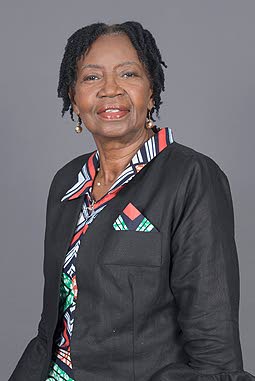Europeans stamp mark of possession on Tobago

Branding was a characteristic feature of the imperial enterprise from Africa to the Caribbean. Once African captives were acquired they were branded with a symbol of the owner or purchaser, and once on the ships, they were again branded with the mark of the ship owner.
These marks were considered essential in the identification of possessions given the prevalence of stealing of captives that occurred during the journey across Africa and the Atlantic.
A standard feature of European colonising efforts in the Caribbean was the desire of each country to show ownership of newly-acquired territories by imposing its specific brand of markers on them.
In the heyday of European rivalry for colonial possessions in the region, the acquisition of territories was intensified as Europeans engaged in imperial expansion. This was an index of imperial strength and an important determinant of their position on the power scale in Europe. In addition, the economic benefits expected from colonies served to make the Europeans more aggressive in their search for possessions in the Caribbean.
It was as important to the European countries to brand their colonial possessions as it was for the plantation owners to brand their enslaved possessions. While the primary intent of plantation owners was to identify runaways, the purpose of the European branding exercise was to assert its particular ownership of the territory and to signal to rivals, its intent to defend its possessions. Branding was a continuous exercise in which Europeans engaged in what is best referred to as “rituals of possession.”
The first stamp of the European possessor was the name given to the colony and the raising of its flag at a prominent part of the territory where it would be visible to all who approached. This announced ownership by a particular European country and obliterated the First Peoples’ claims to ownership, as the Europeans never recognised the First Peoples as owners of the territories.
It was also an announcement to their European rivals that the territory, hitherto regarded as “unoccupied,” was now European-owned.
In the case of territories like Tobago, which was hotly contested by several European countries, the rituals involved several naming and re-naming exercises. This occurred with each change of European owner.
The brand of ownership was further stamped onto Caribbean territories through maps and charts created by the Europeans. The colonisers stamped the name it gave to the colony and place names within it, as well as all documents and written records about the island.
Tobago endured several of these rituals. Columbus is said to have sighted the island on his third voyage and it was claimed by Spain. Some of the earliest Spanish charts and maps record the names Asunción and Concepción, but it is not clear that these referred to Tobago.
Belaforma appears as the name of the island once on an early map, and it remains debatable whether that name was an official designation of the island. Some early 16th-century maps named the island as La Magdalena for a short time.
The name that most commonly appears on Spanish maps and charts from 1529 onwards is Tobago, Tabago or Tabagua – said to refer to a pipe used by the First Peoples or the leaf of the tobacco plant they smoked. It seems unlikely that the island was first named by Columbus.
Another set of maps of the island was produced during the period when the island was jointly occupied by the Courlanders and the Dutch.
Since the cartographers were Dutchmen, under their influence, Tobago bore a significant number of Dutch names. The island was called New Walcheren; Plymouth was called Jacobstadt, and the fort established in the area was called Fort Jacobus; Scarborough was called New Flushing; Rockly Bay was known as Lamsins Bay after the island’s Dutch owner Conelius Lamsins; Castara was Kalpi Bay; Bloody Bay was Erasmus Bay; Prince Bay was Flemings Bay; King’s Bay was Kuylsac Bay.
Fort Bennet at Black Rock and Monck’s Fort at Rocky Point were named after the leaders of the Courlanders expeditions; Rocky Bay was called De Casimiri Bay after a son of the Duke of Courland; Stetyns Bay was called Courlander’s Bay or Ferdinand’s Bay, after Ferdinand, the son of the Duke of Courland.
Dutch influence on the maps of Tobago continued to be reflected in the 17th-century maps of the island. Parlatuvier was Stetyn’s Baaie; Castara was Calpie Baaie; Canoe Bay was Kanoe Bay; Buccoo Bay was Coerse Baaie; Constant Bay or Courland Bay was named after Pieter Constant, a Dutch commander of the island; and Roxborough was Engels Baaie.
The next stage in the process of rebranding Tobago occurred when the island became a British possession in 1763.
But since British possession of the island was the longest, we will look at the French occupation which occurred between 1781 and 1793 – between two phases of British possession. The island continued to be referred to as Tobago, but the French flag was planted and the capital, called Scarborough by the British, was renamed Port Louis. Fort George was called Fort Castries and later Fort Libertie. Other places with French names included Les Coteaux (the hills), Lambeau (beautiful waves), Louis D’Or, Bon Accord and L’Anse Fourmi and Parlatuvier.
Some of the French place names survived during the restoration of British possession of the island and remain in use today.
Courland Bay and the names of the two forts are reminiscent of the presence of the Courlanders. The main reminder is the remnants of the fort they established in the area now called Dutch Fort.
Part II of this series will look at the British process of stamping its ownership of Tobago

Comments
"Europeans stamp mark of possession on Tobago"